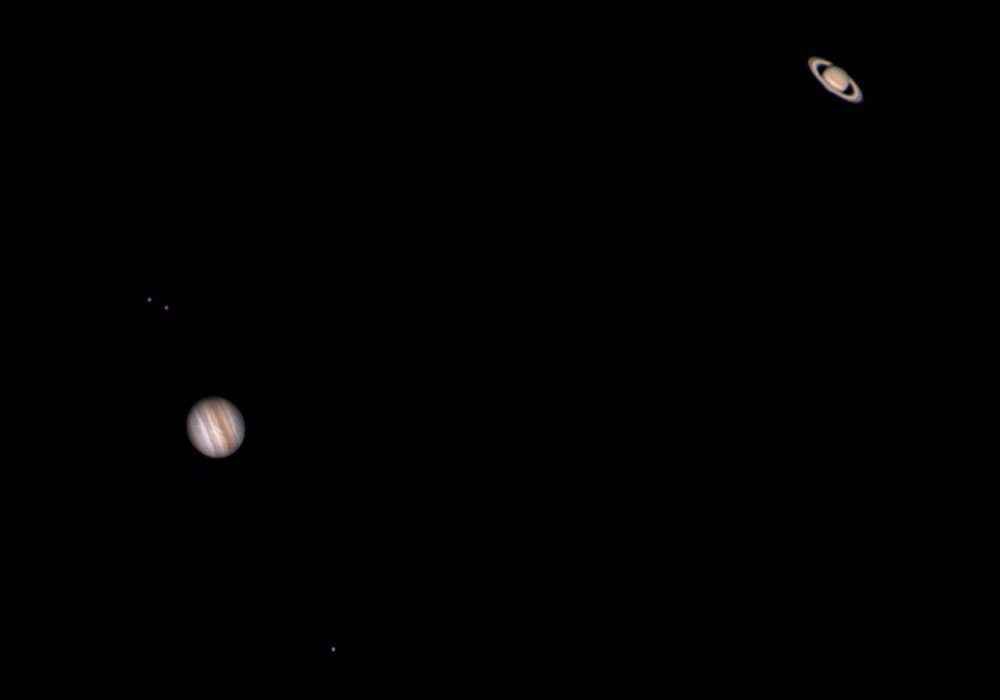Jupiter, Saturn Come Together in Night Sky
The planets Jupiter and Saturn have been moving closer and closer to each other in the night sky. In fact, on December 21, they appear closer together than they have in hundreds of years.
When two astronomical bodies appear close in the sky, as seen from Earth, it is called a conjunction. Conjunctions can happen with any two bodies, such as planets, moons, stars and asteroids. When Jupiter and Saturn come together, it is called a "Great Conjunction."
Astronomers say these events between the two largest planets in our solar system are not especially rare. Jupiter passes its neighbor Saturn once every 20 years as they circle around the sun.
But this conjunction is especially close: From Earth, the two planets will look to be just one-tenth of a degree apart. That is about the distance of one-fifth of a full moon.
If weather permits, they should be easy to see just after sundown. This just-in-time-for-Christmas sight promises to be one of the greatest of Great Conjunctions.
David Weintraub is an astronomy professor at Vanderbilt University. He told The Associated Press that a close conjunction that happens in our nighttime sky is very rare.
"I think it's fair to say" that such an event usually may happen "just once in any one person's lifetime," he said. "And I think 'once in my lifetime' is a pretty good test" of whether something should be considered rare or special.

The Jupiter-Saturn conjunction has not been this close since July 1623. But, back then, the positioning was almost impossible to see because of its closeness to the sun.
What makes this modern "Great Conjunction" special is it is happening at nighttime. The last time that happened was almost 800 years ago. The year was March 1226. Around that time, warrior-ruler Genghis Khan was conquering Asia.
Saturn and Jupiter have been getting closer in the south-southwest sky for weeks. Jupiter, which is bigger and closer to Earth, is much brighter.
"I love watching them come closer and closer to each other," said Nahum Arav in an email. He is an astronomer at Virginia Tech University. He said he loves the fact that he will see with his own eyes from his own home.
The two planets might look like one body if viewed with eyes alone. If sky watchers use binoculars they should be able to see the planets as separate. Saturn will be the smaller, less-bright body at Jupiter's upper right.
Even though they appear close, more than 730 million kilometers of space lies between them. Observers using telescopes will not only capture Jupiter and Saturn in the same field of view, but also some of their brightest moons.
Their next close pairing will happen March 15, 2080.
I'm Alice Bryant.












